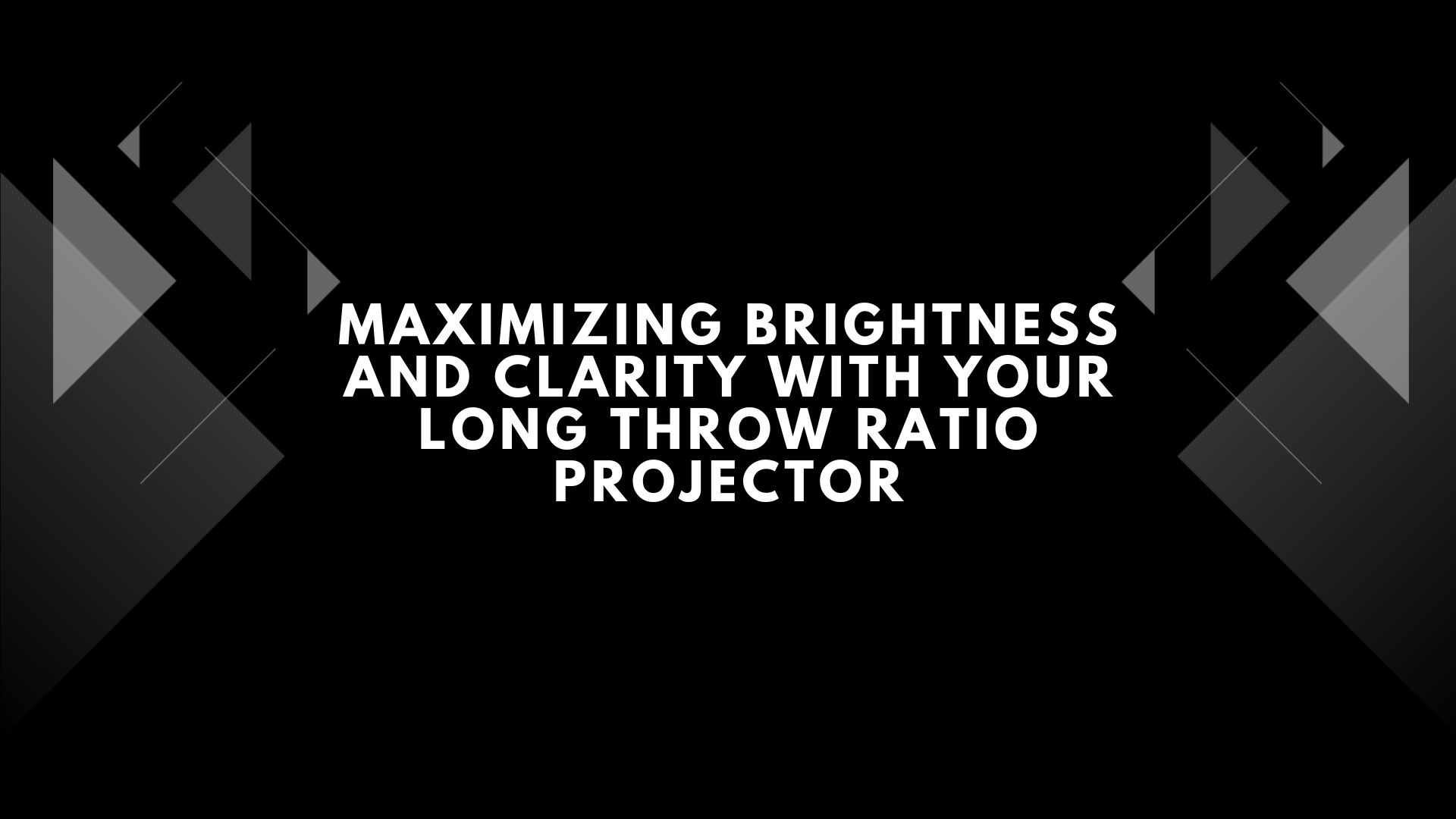When it comes to designing immersive visual environments, AV professionals know that precision is everything. One of the most crucial factors in achieving the perfect image is mastering the throw distance ratio. If you want your projector setup to deliver crystal-clear visuals without distortion, understanding how to calculate throw distance ratio for projector is essential.
This guide takes you deep into the techniques and secrets AV designers use to optimize projector installations. Whether you’re designing a home theater, corporate boardroom, or large-scale auditorium, learning to calculate throw distance ratio like a pro can make or break the visual experience.
What Is Throw Distance Ratio?
Throw distance ratio (TDR) is the relationship between the distance from the projector lens to the screen (throw distance) and the width of the projected image. It’s calculated as:
Throw Ratio = Throw Distance / Image Width
For example, if a projector is 10 feet away from a screen that is 5 feet wide, the throw ratio is 2.0.
Understanding this ratio helps you decide how far your projector should be placed to fill your screen perfectly. It also helps you choose the right projector based on your available space and desired screen size.
Why Calculating Throw Distance Ratio Matters
Accurately calculating throw distance ratio for projector setups ensures:
- Proper image sizing without distortion or cropping
- Efficient use of space in the room
- Compatibility with fixed installations
- Better planning for furniture layout and cabling
AV designers rely on TDR to predict the visual outcome before any equipment is physically installed.
Types of Throw Ratios: Know Your Gear
Ultra-Short Throw (UST) Projectors
- Throw Ratio: Less than 0.4:1
- Best For: Tight spaces, wall-mounted setups
- Secrets AV designers use: Install just inches from the screen, often with custom mounts to minimize shadows.
Short Throw Projectors
- Throw Ratio: Between 0.4:1 and 1.0:1
- Best For: Small rooms, classrooms, home offices
- Pro Tip: Use reflective screens to enhance brightness in short-distance setups.
Standard Throw Projectors
- Throw Ratio: Between 1.0:1 and 2.0:1
- Best For: Versatile home theaters, conference rooms
- AV Secret: These projectors offer the best balance of zoom flexibility and image clarity.
Long Throw Projectors
- Throw Ratio: Greater than 2.0:1
- Best For: Large venues, outdoor setups, auditoriums
- Insider Trick: Use a home theater design calculator to plan projector mounts from 20+ feet away.
How to Calculate Throw Distance Ratio for Projector
Follow these steps to calculate throw distance ratio like an AV designer:
Step 1: Measure Your Screen Width
Use a tape measure to get the actual width (not diagonal) of your screen in feet or meters.
Step 2: Measure the Distance Between Projector and Screen
Determine how far the projector will sit from the screen, keeping it centered to avoid image skewing.
Step 3: Use the Formula
Throw Ratio = Throw Distance / Screen Width
Example: If your projector is 12 feet away from a screen that is 6 feet wide:
12 / 6 = 2.0 (Throw Ratio)
Step 4: Match With Projector Specs
Compare your calculated ratio with the specifications of your projector. If the projector has a throw ratio of 1.8–2.2, then a throw ratio of 2.0 will work perfectly.
Tools AV Designers Use
Projector Range Calculators
AV designers rarely guess. They use tools like:
- XTEN-AV Projector Calculator
- ProjectorCentral.com Throw Calculator
- Epson Projection Distance Calculator
Home Theater Room Size Calculators
These help determine whether your room can accommodate the ideal screen size and throw distance.
Home Theater Projector Setup Diagrams
Design software like XTEN-AV offers automated diagrams based on the throw distance ratio and room dimensions.
Advanced Tips from AV Designers
Tip 1: Zoom Range = Flexibility
Look for projectors with zoom lenses that accommodate a wide range of throw ratios.
Tip 2: Account for Lens Shift
Lens shift allows you to move the image without moving the projector. Perfect for fine-tuning.
Tip 3: Consider Light Levels
In larger or brighter rooms, calculate brightness requirements alongside throw distance.
Tip 4: Test Before Final Mounting
Use a test projection to confirm the image size and clarity match your throw ratio calculations.
Tip 5: Don’t Forget Ceiling Height
Ensure the throw angle and screen height align, especially for permanent ceiling mounts.
Common Mistakes to Avoid
- Using Diagonal Instead of Width for TDR calculations
- Ignoring Zoom Limits when choosing a mounting location
- Skipping Pre-Installation Testing of image alignment
- Not Considering Screen Gain in bright environments
- Overlooking Ventilation Needs when placing projectors in enclosures
Project: 140″ screen in a 20-foot-long basement
Steps Taken:
- Measured screen width: 122 inches (10.16 feet)
- Desired throw distance: 17 feet
- Throw Ratio: 17 / 10.16 = 1.67
- Matched projector with zoom range of 1.6–2.0
- Installed ceiling mount using XTEN-AV diagram
Result: Perfect fit with crisp, edge-to-edge image.
Conclusion
Whether you’re an AV integrator or an enthusiast planning your dream home theater, understanding how to calculate throw distance ratio for projector setup is a foundational skill. It allows you to plan smarter, install faster, and achieve professional-grade results.
Take advantage of projector calculators, measurement tools, and layout diagrams. With these secrets from AV pros, you can turn any room into a visually stunning experience.
Want help with calculating throw ratios for your project? Try XTEN-AV’s free calculator tools or book a consultation today.
Read more: https://www.bondhuplus.com/read-blog/185788
